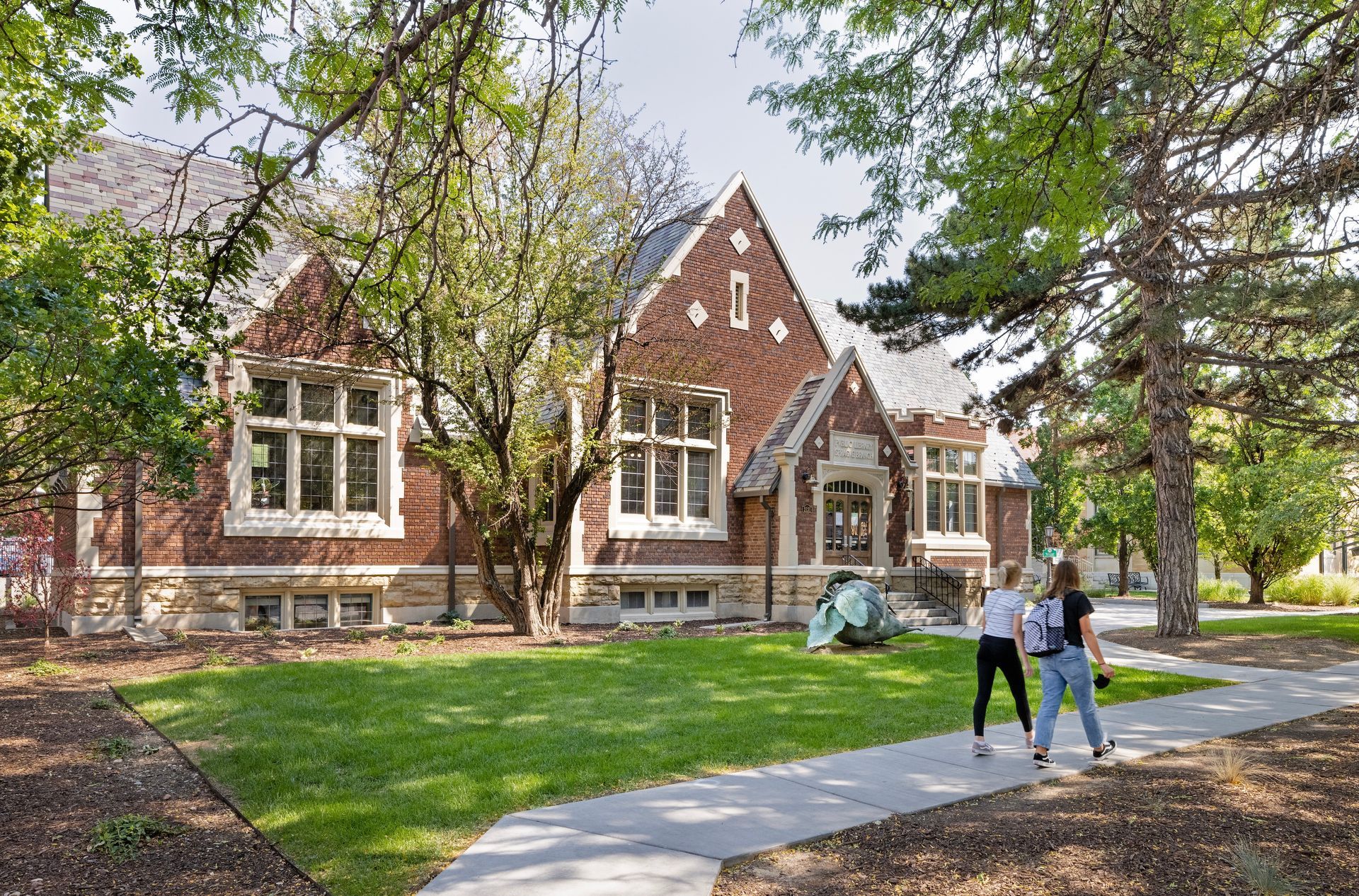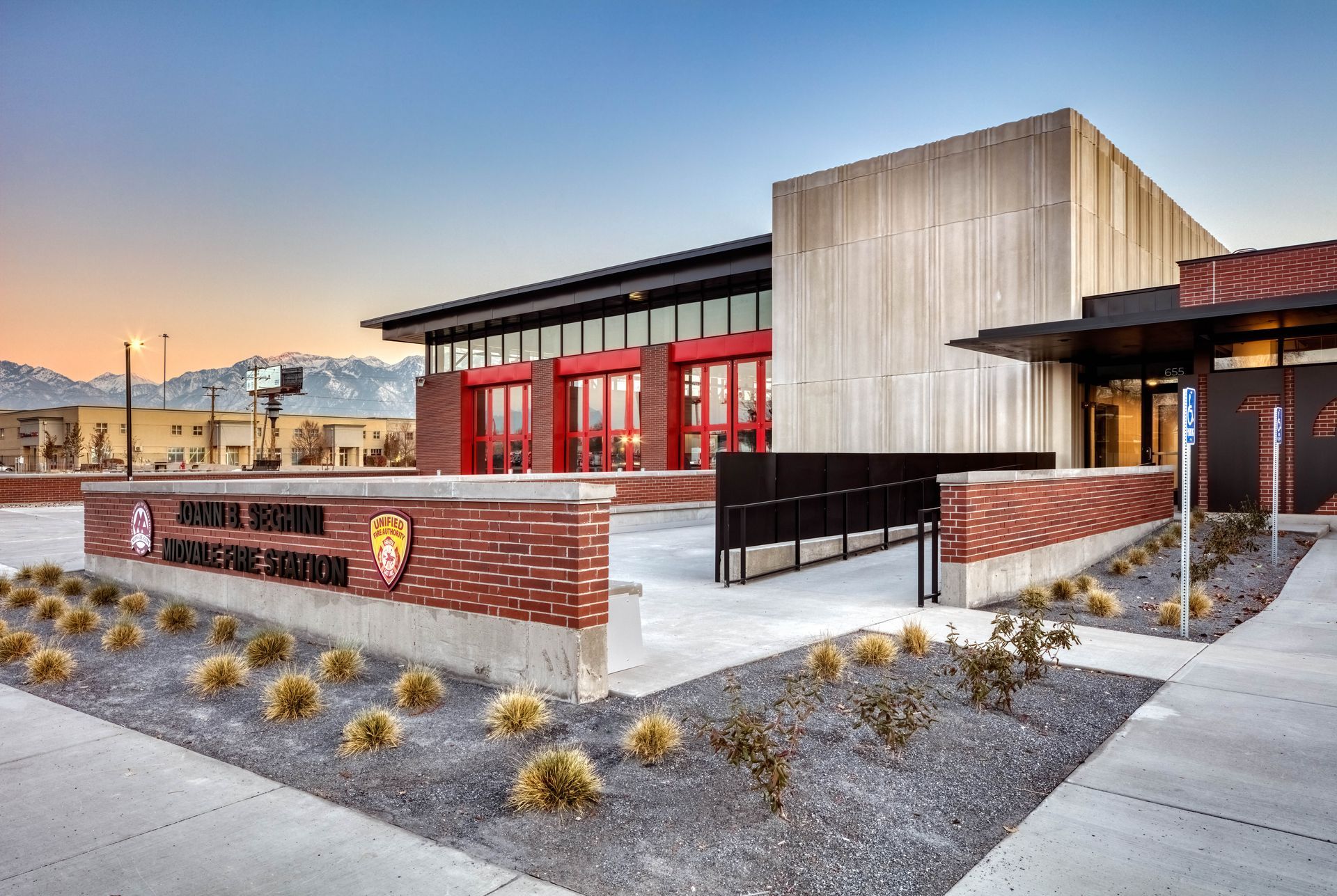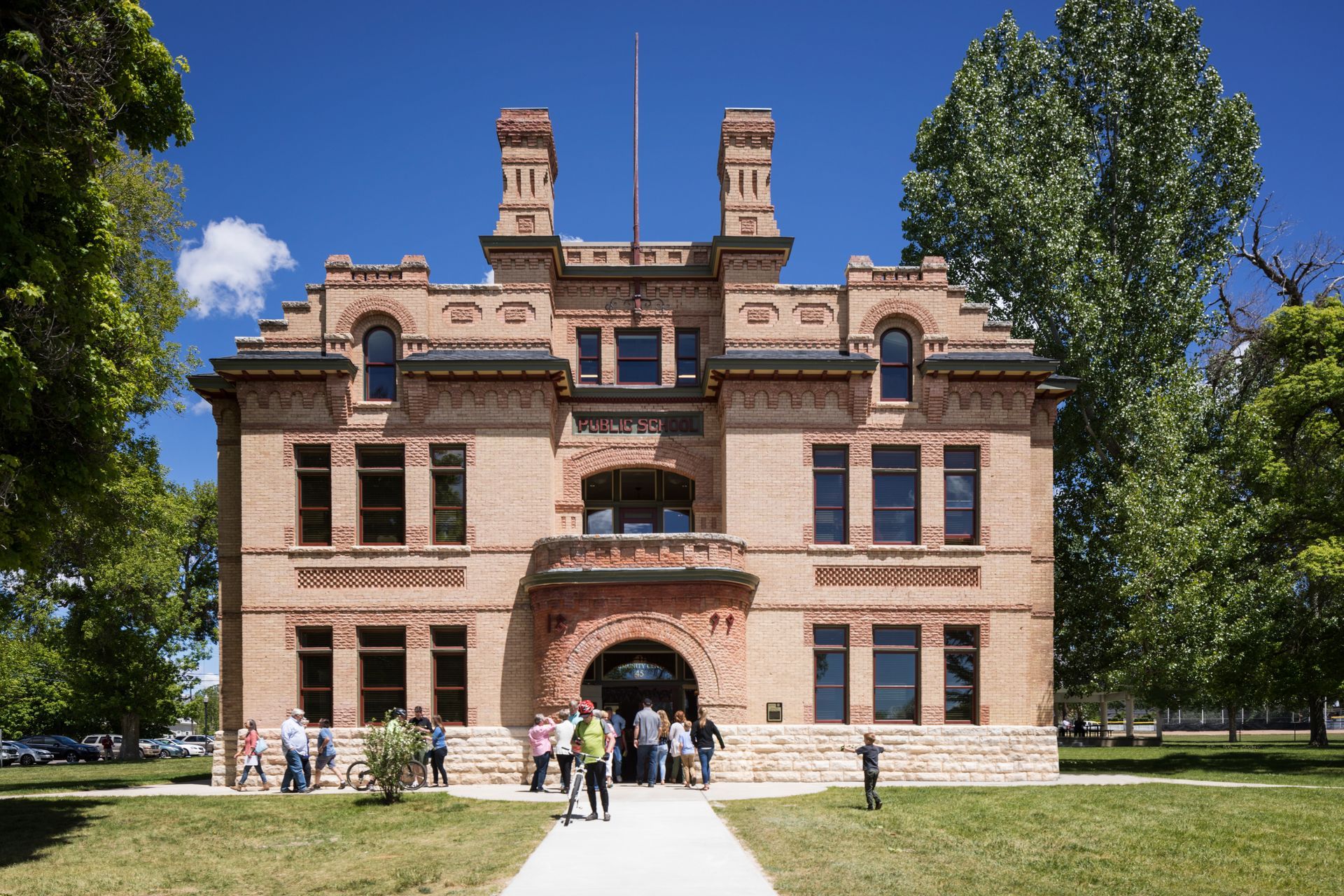Celebrating its centennial anniversary this year, Paulsen Construction has quadrupled revenues over the past decade, with sights on a prosperous future and the eventual passing of the torch to a fifth generation in the Paulsen family. By Brad Fullmer

Over the course of 100 years in the construction industry, Salt Lake-based Paulsen Construction has navigated through myriad ups and downs while developing a rock-solid reputation over multiple generations as a general contractor willing to take on difficult projects that other firms may not have the gumption to tackle.
As the company celebrates hitting the historic—and highly coveted— century mark this year, it finds itself in an enviable position with record annual revenues the past three straight years, a string of successful, high-profile public and private projects in the past decade, and a fifth generation of Paulsen’s in line to ultimately take over the reins from John Paulsen, President of the 40-person company since 2010.
“We’re doing some really great things, but we’re always going to be judged on the last project we did, or how good our trade partners are,” said John, 56. “Our focus is always on customer service and satisfaction—it has to be maintained from start to finish on every project.”
Paulsen Construction has seen revenues spike more than five-fold since 2014, from $11 million in 2014 to a projected $60 million this year. The growth has been fueled by a combination of hiring the right people and expanding its reach into multiple building markets.
The company has long been renowned for its work on historical restoration projects, particularly under the direction of Craig Paulsen, John’s father and the third-generation leader of the company for 35 years, who served as President from 1976 to 2010. Both Craig and John admit to being construction “lifers” and remember being on jobsites and doing “gopher” work as early as they can remember.
“We were all really good at construction—it’s true,” said Craig, 78, whose career spans six decades and dates back to projects like Gold Miner’s Daughter lodge at Alta Ski Resort in 1966, his first job as a Project Manager at age 19. “That was the first job I had on my own. I remember pouring foundation walls on August 23, and it was snowing cats and dogs.”

Three generations of Paulsen’s are pictured: (left to right) Craig, the third-generation leader from 1976-2010; John, current President (since 2010); Steiner, who along with brother Jorgen (not pictured) represent the fifth generation of the Paulsen family.
Paul Paulsen Set Tone of Hard Work, Determination for All Paulsen Generations
Paul Paulsen was a brawny, hardworking fisherman who grew up in a remote village in the Lofoten Islands, an archipelago located above the Arctic Circle in Norway. Craig described his grandfather as “a big Norwegian” who had strong hands and knew how to use them. Paul joined the Church of Jesus Christ of Latter-day Saints and moved to Utah in 1909 in hopes of a better life.
Paul landed work as a millwright at Fetzer’s, a woodworking company (now Fetzer’s Architectural Woodwork) founded in Salt Lake City by German immigrant Kasper Fetzer in 1909. Paul also spent time during that period working for Morrison-Merrill Lumber before building projects on his own in 1919. By 1925, he had founded Paulsen Construction. He mainly focused on smaller commercial projects in the downtown Salt Lake area, building two- and three-story masonry apartment buildings and earning a reputation as an honest, reputable contractor. Sprague Library in Sugar House—originally built in 1928—is one of Paul’s notable projects, and a building that Paulsen Construction later restored in 2021.
Paul was ambitious and unafraid to take on projects that fell outside his traditional skill set. As an example, John said his great-grandfather led the charge on building SR-92 (originally SR-80) through American Fork Canyon in 1935, a Herculean feat at the time, especially since constructing with heavy equipment like bulldozers was still a developing concept.
The can-do attitude of being willing to build anything—no matter how difficult or risky—ultimately became the company’s hallmark.
“Not everybody has an interest in building really difficult projects,” said John. “But that’s been our forte forever. I’ve always said Paulsen Construction is willing to do the work that nobody else will.”
Paul had four sons, with Byron ultimately taking over as the second-generation President in the early 1950s.
Under Byron’s watch, Paulsen became a leading general contractor in the state, one capable of building large, high-profile projects. John said his grandfather shrewdly developed strong relationships with leaders from the State of Utah’s building program, along with the LDS Church, which led to significant work at Brigham Young University.
Byron had Craig working by age 8; he recalls working on Highland High School, which finished in 1956. Byron also ran ACME Crane (a company started by Paul), which Craig said opened the door into the tilt-up concrete market.
“My father did [mostly] large commercial work, and he was successful over many years,” said Craig. “When I was first running jobs (late 60s/early 70s), we did a lot of tilt up concrete because we had the cranes.”
John cited the Farnsworth Peak Broadcast Tower project—on top of the rugged Oquirrh Mountains—as one of the most challenging jobs under Byron’s watch. It required the construction of seven towers to support a used tramway for easier access from the west slope. As crews were pulling up the last cable via an old World War II Jeep, it lost connection and slid a mile or so down the mountain, wreaking havoc on anything in its path.
“It was a disaster, but they got it fixed, eventually. We seem to get involved in really complex projects,” John chuckled. “They’re always one-offs. They’re important projects with a lot of inherent risk. That’s what we’re known for.”
Craig attended the University of Utah (U of U) and studied architecture, fine art, and geology, but pivoted back to construction simply because that’s what he felt he knew best, in addition to being what he truly loved. But his interest in design is evident in his passion for historical restoration and renovation, and Paulsen has completed dozens of unique projects in that arena over 50-plus years.
“It’s in our blood,” said Craig of the construction profession. “It’s nothing I wanted to aspire to be growing up—anything but that. But in the end, it came naturally. Throughout my life, I’ve enjoyed working hard. My heart was in historic structures; I was more interested in that than large volume projects like my father built.”
Craig became the heir to the keys of the company—the only one of Byron’s seven children to pursue a career in construction—taking over as President in 1976. Byron remained firmly involved with day-to-day activities through 1990, even serving as President (now Chairman) of the Associated General Contractors (AGC) of Utah in 1984. Byron sadly passed away from Leukemia in 1991, less than a year after retiring.
Under Craig’s leadership, the company began pursuing heavy/civil projects, particularly wastewater treatment plants—a savvy business move to counter brutal economic conditions and 20% interest rates in the late 1970s and early 1980s. Constructing wastewater plants was no picnic, but it kept the doors open.
“Work was hard to come by, unless you were willing to work for nothing,” Craig recalled of that period. “We had to be adept to figure out what kind of project we could do and make a living. That’s why I got into the wastewater market—they were profitable jobs. They are not ideal projects to build, but we made good money.”

Paulsen recently completed the replacement of the rooftop at the Salt Lake City Main Library
Like Father, Like Son—x 4
Working in the field at a young age—a very young age at that—was a Paulsen tradition for at least three generations, as Byron, Craig, and John all can stake a claim to working with their respective fathers around eight years old on. It’s just what you did as a Paulsen.
John was running projects by the time he graduated from North Sanpete High in 1987. Like Craig, he has experience across virtually every major building market, with a genuine passion and specialty in renovations and restorations.
“John has significant expertise because he worked with me for so long and did a lot of historic work, plus he’s also more adept at today’s ways of doing business,” said Craig.
In addition to Sprague Library, John said the company renovated a McCune daughter house at 235 A Street in Salt Lake City, with both projects originally built by Paul nearly 100 years prior. Sprague was one of the most unique projects John has ever seen, and certainly tested the company’s construction chops.
“It was definitely sentimental that a previous family member built it—there was a lot of motivation within our firm,” said John. “In this city, 100-year-old buildings are just torn down. The library has been such an iconic piece to Salt Lake City. To be a part of this project, knowing it will be around another 100 years, is special.”
One of the most meaningful projects the firm has restored—at least in Craig’s mind—is the transformation of Spring City’s “Old School” (originally built in 1899) into the Spring City Community Center. Craig moved his family to Sanpete County in 1983 and is personally responsible for the restoration of more than 100 buildings in the city of 1,100.
Bringing in a “Right-Hand Man” Spurs Diversity, Revenue Growth
Finding work through difficult economic periods is another hallmark of the firm, and something John learned well from Craig. The company made it through the 2008 recession by identifying unique opportunities to ply their craft. That included creating a separate seismic rehabilitation company in 2007, John said, that focused on K-12 MEP upgrades, along with doing work for the NSA, Jordan Valley Water Conservancy District, and other public entities.
John was named President in 2010 and trudged through four years of trying to do too much before ultimately bringing in Harold Saunders as Business Development Director in November 2014. That role has morphed over a decade into more of a “right-hand man” role, with Paulsen and Saunders strategically pursuing considerable work in the public sector. The company has been rewarded with several notable projects since 2015, including:
—Seven new fire stations in Utah for municipal clients, including West Valley City (three stations) and Midvale.
—A $13 million GSA Consolidation that included the renovation of six floors of the eight-story, federally-owned Wallace F. Bennett Building in Salt Lake City.
—Two new UTA TRAX Stations—600 South Station in Salt Lake and South Jordan Downtown in South Jordan. The latter opened in March, a Bo Jackson laser throw from the new Salt Lake Bees Stadium and Downtown Daybreak’s entertainment complex.
—A $5 million renovation Salt Lake City Main Library rooftop terrace (completed in May 2025);
—A new $20 million Antelope Island Visitors Center for the State of Utah DFCM (November 2025 completion).
—Two historic restoration projects in Yellowstone—a $23 million Laurel Dorms rehab in Wyoming and a $20 million renovation of Fort Yellowstone in Montana.
“When John took over the company, there was a shift in direction,” said Saunders, a 30-plus year construction veteran.
“We’ve grown strategically, not just by dollar volume. The size of our projects has gotten larger. When I started, we were doing $4-5 million jobs. That’s why John brought me in—he wanted to get the company back to where it was in the late 80s/early 90s and pursuing $15-20 million projects.”

The Midvale Fire Station project showcases the firm’s commitment to building quality municipal projects. (photo courtesy ajc architects, by Alan Blakely photography)
Training Up the Fifth Generation
Two of John’s three sons—Steiner (age 30) and Jorgen (27)—are being primed to one day take over the family business as the fifth generation of Paulsen Construction leaders. Steiner earned a Bachelor of Mechanical Engineering from the U of U in 2017, while Jorgen earned a Bachelor of Marketing from the U of U in 2020. Both started “officially” working at Paulsen by age 15, but have been around jobsites for as long as they can recall, particularly tagging along with Grandpa Craig on old Spring City home projects.
“I was officially on the payroll at 15, but I feel like I’ve been working on house projects and going to jobsites my whole life,” said Steiner, currently a Project Manager with a half dozen projects on his plate. “I definitely remember going down in some nasty, dusty basements on old house projects,” he said. “[Grandpa] has always been very hands-on—he liked to do the work. He taught me some good skills.”
Jorgen’s path has been a little more circuitous, he admits, and considerably more challenging due to a serious scooter accident last summer that left him in a coma with a traumatic brain injury for six days and in the hospital for two months.
At the time, doctors said he may not live, and if he did, his mobility would be impacted, among other potential long-term complications. Somewhat miraculously, he’s fully recovered—and says he feels better than ever. Mostly, he appreciates where he’s at and the opportunity to contribute to the family’s construction legacy.
“Going through an experience like that really opened my eyes to what I have in my life, and I want to be part of the next generation,” said Jorgen, who is currently a Project Coordinator on the Laurel Dorms in Yellowstone. “I’m learning a lot about myself, about construction, about historic renovation. It’s been a big learning curve, but I’ve learned a lot.”
The significance of seeing his grandsons earning their wings is not lost on Craig.
“I think it’s just super,” he said of Steiner and Jorgen. “The business is not getting any easier, but I’m proud of them.”
“When you instill trust with somebody, put them in charge of a particular aspect of a project; it gives them skin in the game, as opposed to punching a clock,” added Saunders. “They’re doing a great job and it’s rewarding for John, and for Craig, to see them grow.”

The 650 South Trax Station illustrates Paulsen’s ability to take on difficult projects in unique building markets.
Onward and Upward
When Saunders came aboard near the end of 2014, Paulsen Construction was wrapping up an $11 million year—good, but not great. Via Saunders’ proposals, the company made the shortlist on the first seven projects submitted, and he’s had free rein since to pursue anything he feels fits Paulsen’s skill set. The company expects to top $50 million this year, and $60 million in 2026.
Having worked for much larger firms in the past, Saunders appreciates being at a mid-sized, family-owned company—one that genuinely appreciates his efforts—something he felt was lacking at previous stops along his career path.
“It’s nice to find your niche in a family-owned company,” said Saunders. “You’re acknowledged for doing a good job, and you have more opportunities to show what you can do, rather than just being a number. John and I are like best friends—that’s an anomaly in any business, much less construction.”
“It’s great to be a part of a family and group where stories are told,” said John. “The stories are the projects we build. When you look back on certain periods, there is always a story tied to the project you’re working on. That’s what makes the connection and fosters the camaraderie between people, and it makes our jobs worthwhile. It’s about remembering the people, the supers, the subs; all the partnerships we had along the way. The rewarding part is we’re leaving behind an amazing legacy.”
“It's so rare that a company would last that long with family ownership,” added Craig. “It does my heart good.”

Craig Paulsen continues to work on projects in his adopted hometown of Spring City, having restored more than 100 buildings in the small Sanpete County town, including the “Old School” that was originally built in 1899 and restored as the Spring City Community Center in 2017. (photo by Dana Sohm, Sohm Photography)
Top Paulsen Construction Projects
Project: Location, Year Completed
Sprague Library Renovation: Salt Lake City,1928; 2021
Highland High School: Salt Lake City, 1956
BYU School of Law: Provo,1972
LDS Missionary Training Center: Provo, 1976
Devereaux House Restoration: Salt Lake City, 1983 ?
Butch Cassidy Home: Circleville, 2016
Spring City Community Center: Spring City, 2017
Midvale Fire Station: Midvale, 2023
UTA TRAX Stations: SLC; South Jordan, 2023; 2025
Salt Lake Library Roof Replacement: Salt Lake City, 2025
Antelope Island Visitors Center: Antelope Island, 2025





























